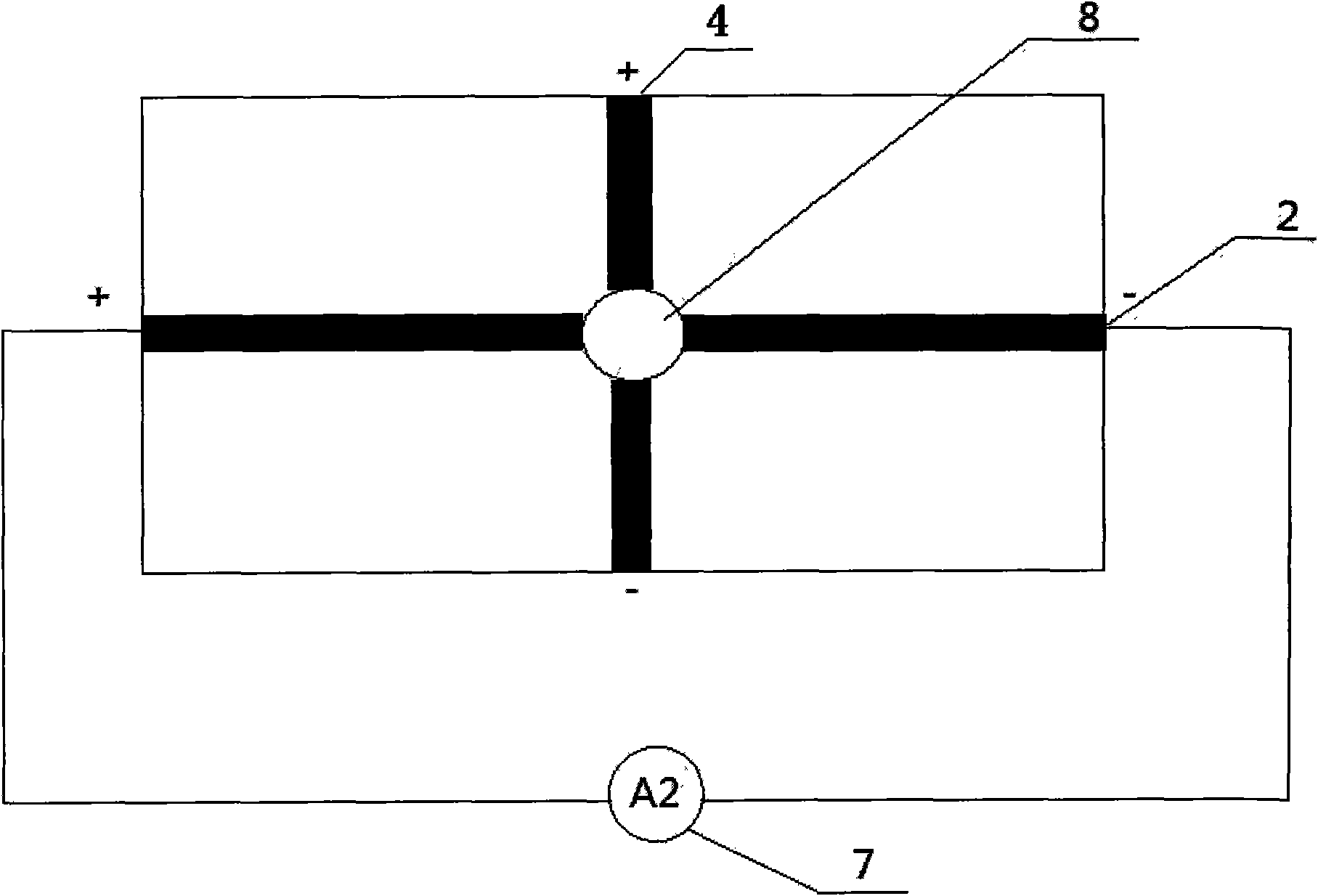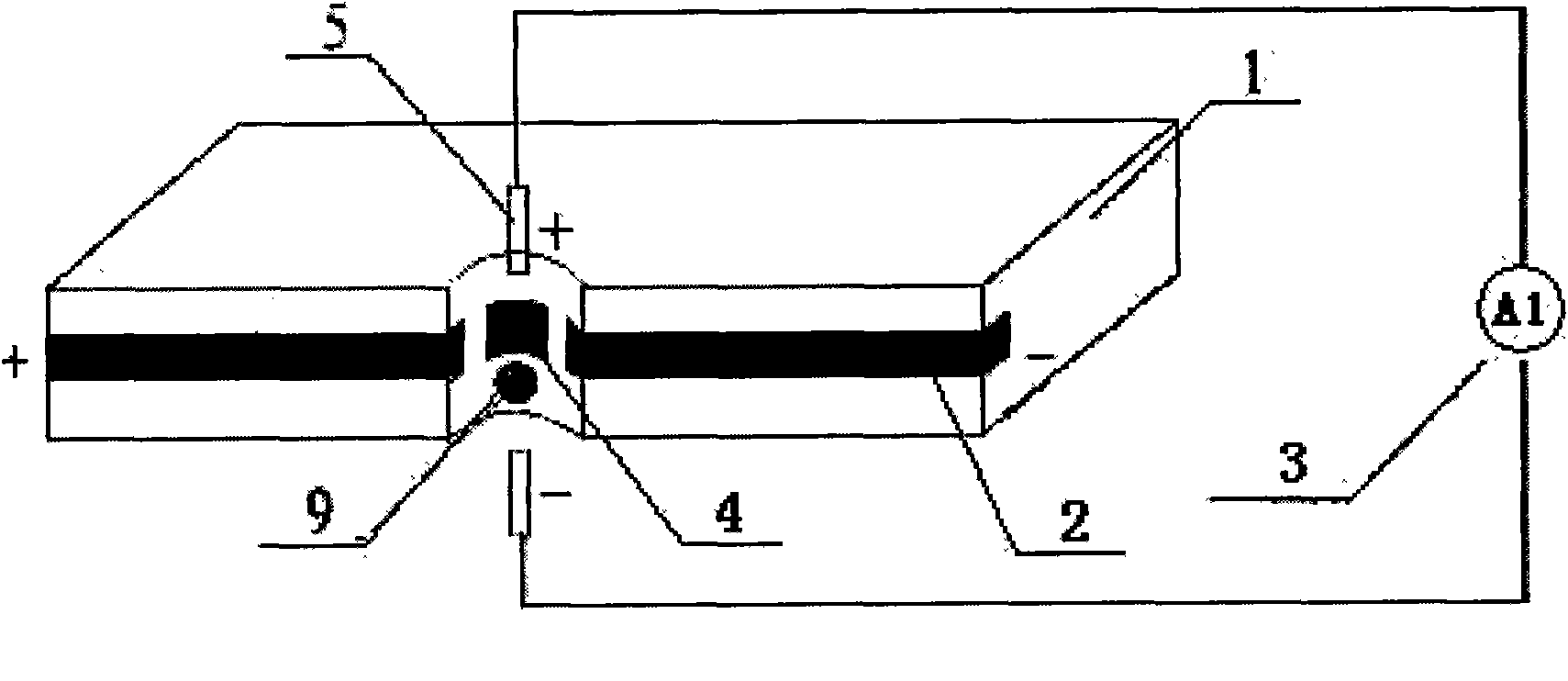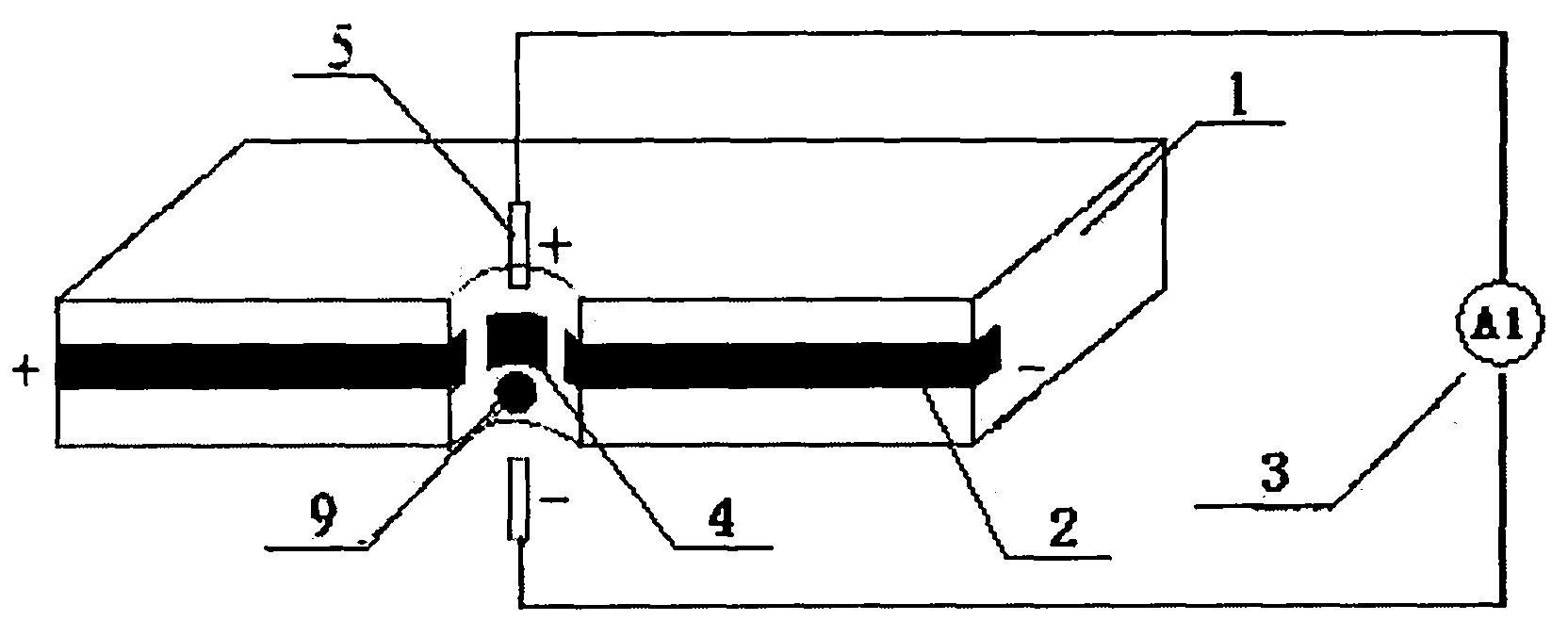Graphene-based nano-pore monomolecular sensor and medium identification method thereof
A nanopore and graphene technology, which is applied in the field of nanofluid detection, can solve the problems affecting the resolution of the sensor, and achieve the effects of high structural stability, good toughness and strength
- Summary
- Abstract
- Description
- Claims
- Application Information
AI Technical Summary
Problems solved by technology
Method used
Image
Examples
Embodiment Construction
[0014] In order to make the content of the present invention more obvious and understandable, further description will be made below in conjunction with the accompanying drawings and specific embodiments.
[0015] combine figure 1 , figure 2 As shown, a graphene-based nanopore single-molecule sensor of the present invention is a sandwich structure, and the radial electrode 2 is a single-layer or multi-layer graphene, sandwiched in the middle of the insulating layer 1, and the center position of the sensor insulating layer is used A nanopore channel 8 is prepared by the FIB method. The graphene radial electrode 2 includes an anode and a cathode, which are respectively located at the radial ends of the nanopore channel 8. The radial ammeter 7 is connected in series with the anode and the cathode of the graphene radial electrode 2. Two Pt electrodes 5 are placed on the axial direction of the nanopore channel 8, which are respectively an anode and a cathode, and the axial ammete...
PUM
| Property | Measurement | Unit |
|---|---|---|
| Diameter | aaaaa | aaaaa |
Abstract
Description
Claims
Application Information
 Login to View More
Login to View More - R&D
- Intellectual Property
- Life Sciences
- Materials
- Tech Scout
- Unparalleled Data Quality
- Higher Quality Content
- 60% Fewer Hallucinations
Browse by: Latest US Patents, China's latest patents, Technical Efficacy Thesaurus, Application Domain, Technology Topic, Popular Technical Reports.
© 2025 PatSnap. All rights reserved.Legal|Privacy policy|Modern Slavery Act Transparency Statement|Sitemap|About US| Contact US: help@patsnap.com



